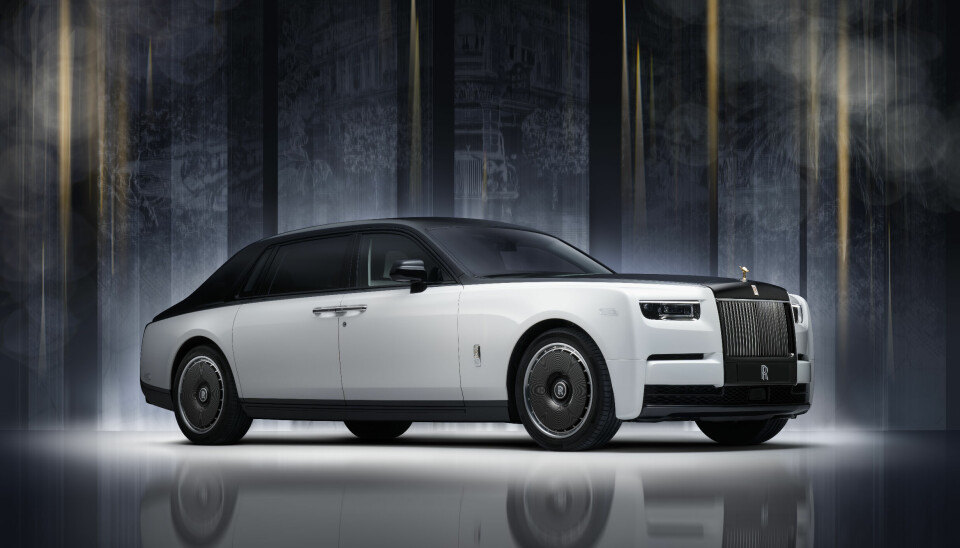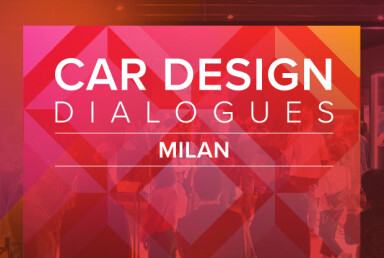Phantom Centenary Private Collection
Rolls-Royce unveils collection of 25 cars to mark Phantom centenary

A variety of techniques combine to make this Private Collection Rolls-Royce’s most accomplished artistic expression yet, paying tribute to the Phantom’s rich history
Just 25 customers will be the recipients of Rolls-Royce Phantom Centenary Private Collection examples. “For a century, the Phantom nameplate has expressed the pinnacle of Rolls-Royce’s abilities,” says chief executive, Chris Brownridge. “To honour that legacy, this extraordinarily ambitious Private Collection introduces new techniques and is the result of over 40,000 hours of work, culminating in a motor car which reaffirms Phantom’s status as a symbol of ambition, artistic possibility and historical gravitas.”
Black, white and gold are key themes throughout the car, starting with the two-tone arctic white over black paintwork. A new super champagne crystal finish was developed for this project to elevate the paintwork. Inspired by the first Spirit of Ecstasy, the Centenary Private Collection also features a unique version cast in 18-carat gold and plated with 25-carat gold. As a nod to the number of examples and the anniversary, each disc wheel is engraved with 25 lines.
Inside, storytelling through a variety of mediums takes observers on a journey from the Phantom’s infancy right through to its modern-day expression. De la Grange says, “The surfaces read like a book revealing 100 years of Phantom’s history, rich with symbolic references for clients to admire and decipher over many years to come.”
Describing the inspiration behind the scenes depicted, Martina Starke, head of bespoke design explains, “Having the privilege to pay a bespoke tribute to the Phantom nameplate is a once-in-a-generation opportunity. Seizing on the significance of this moment, a record number of designers spent a year immersed in the motor car’s rich history, uncovering the stories that shaped its legend. Their research was distilled into 77 motifs, each capturing a defining moment in Phantom’s journey and expressed with levels of detail we have never attempted before.”
Perhaps the most impressive display of these defining moments is presented across the 45 panels which make up the rear seat upholstery. Two layers of printing are topped by embroidered motifs designed to look like they have been sketched on the material.
Celina Mettang, bespoke colour and material designer says, “Conceived as a contemporary interpretation of a handwoven tapestry, the rear seats tell Phantom’s story through carefully curated details, captured in textiles and embroidery. Every embroidered element was digitally re-drawn by artisans who selected specific stitch application for every stroke.
“For example, in the horse motif, we used spaced stitches to recreate the hair texture, then dense stitching to define the muscle. These fine details required extraordinary precision to get right: one motif went through 24 iterations before we were satisfied.”
Gold stitching is also used on the multi-material door cards which see hard trim transition into soft trim. Each door features a different artwork, all representing a significant journey in the Phantom’s life. The rear doors pay homage to the South of France where Sir Henry Royce would spend the winter months while the front passenger door is a tribute to West Wittering, his favoured summer location. The driver’s door commemorates a 4500 mile journey across Australia completed in the first Phantom built at Goodwood.
These landscapes were created using 3D multi-directional marquetry, laser etching, 3D ink layering and gold-leafing paired with embroidered leather sections which continue the golden roads. Instead of metal speaker covers, these were integrated into the wooden door panels. Similar techniques were used on the picnic tables which feature a Phantom I and Phantom VIII.
Katrin Lehmann, bespoke colour and material designer adds, “We drew on an extraordinary range of sources – original texts, diaries, photographs and paintings – to create a composition that weaves together many threads of Phantom’s story. New technology developed for this project, including 3D ink layering, allowed us to add details at a scale never before possible – some just 0.13 mm in height – from a boat sailing across the sea to location names on a map.”
The headliner is another interpretation of the model’s history, inspired by a picture of Sir Henry Royce seated under a mulberry tree with Charles L. Jenner, the chief engine draftsman of the period and Ernest Hives, the company’s lead test driver. The mulberry tree imagery is accompanied by bees as a reference to the Rolls-Royce apiary.
Thread colours for the headliner were carefully selected to suit the lighting conditions inside the vehicle. The composition was split into three sections to suit the frame sizes of the company’s embroidery machines. Other easter eggs hidden in the headliner include a bird which was created to represent Sir Malcolm Campbell’s Phantom II, known as the ‘Bluebird’.

The bird theme continues on the front seats with the designs referencing the 1923 Phantom I prototype which was codenamed ‘seagull’. Mettang says, “There is a great contrast between the front seats and the rear seats. This was really an homage to the Phantoms of the past, where we had the chauffeur sitting on leather and the customers and owners sitting on delicate fabric. Here we really paid a lot of attention and focused on curation. We really wanted to replicate the artistic process from the first sketch on paper to the final painting and we used laser etched technology to really bring that to life.”
Completing the bespoke interior is what Rolls-Royce calls its Anthology Gallery. Matthew Danton, design manager explains, “Behind the glass, it’s filled with 50 3D-printed individual fins which represent some of the pages of the book of Phantom. Throughout the past 100 years, Phantom has been described by the press in many different ways and we picked some of those words to form the fins from those characters.
“If you look closely, you’ll see words like ‘magnificent’, ‘bespoke’, ‘pinnacle’, all forming these individual fins. You can read them from both sides so the 50 turns into 100 pages of a book, 100 pages of Phantom. What’s new for this gallery as well is we’ve changed the backlighting to have a small rippling effect which gives the impression of these pages moving gently. It’s not enough to distract you as a driver but it’s a poetic final piece.”





















